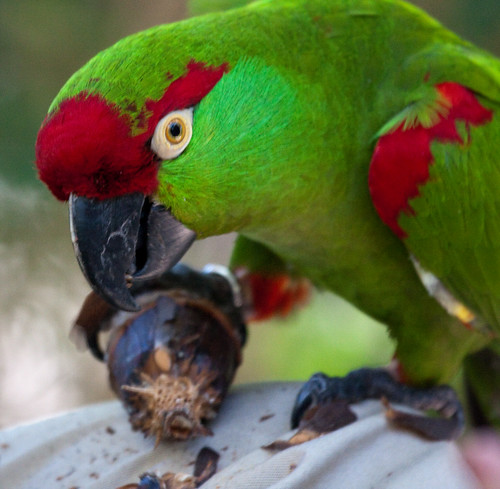Settlement Plans for Parrot
 Sunday, December 19, 2010 at 10:40
Sunday, December 19, 2010 at 10:40  Thick-billed parrot. Image by Nathan Rupert
Thick-billed parrot. Image by Nathan Rupert
LAS CRUCES -- The thickbilled parrot could be on the road to recovery in the Southwest under a settlement agreement filed this week in a federal lawsuit brought by WildEarth Guardians against the U.S. Fish and Wildlife Service.
The parrot has been listed as endangered since passage of the Endangered Species Act in 1973, but the Interior Department failed to develop a recovery plan for the bird as required by law, WildEarth Guardians alleged in the suit filed in federal court in Tucson, Ariz.
According to the settlement filed Tuesday, Interior Secretary Ken Salazar must prepare a recovery plan for the bird by June 30, 2013, with a draft available for public comment by June 30, 2012. The U.S. recovery plan will build upon one issued by the Mexican government last January.
"Our view is, 'Better late than never,' " said Jay Tutchton, WildEarth Guardians' attorney in the lawsuit. "Our hope is that the Secretary's plan will lead to the return of this beautiful bird and our only remaining native parrot."
The only wild population, numbering between 2,000 and 2,800 birds, is in conifer forests of the Sierra Madre Occidental region of northern Mexico, about 60 miles south of the Arizona border. More than 99 percent of the parrot's highaltitude habitat of old growth forest in Mexico has been logged, according to WildEarth Guardians.
A flock of thick-billed parrots was last reported in the Chiricahua Mountains in southeast Arizona in 1938, while the last sighting of a flock in New Mexico occurred in 1964 in the Animas Mountains in the state's southwest corner.
When a single thick-billed parrot was spotted on Ted Turner's Armendaris Ranch near Truth or Consequences in 2003, more than 500 birders from 35 states and seven countries made their way to the ranch to document what was believed to be the first U.S. sighting in the wild in decades. The species is known for its gregarious personality and green plumage with bright red forehead.
In the recovery plan required by the settlement agreement, the Fish and Wildlife Service must consider recovery of the species in the U.S., but the reintroduction of the birds in the wild is not guaranteed. "That is what recovery planning is all about -- determining what are the best options to best address recovery of the species," said Wendy Brown, an endangeredspecies recovery coordinator for the Fish and Wildlife Service's Southwest region.

